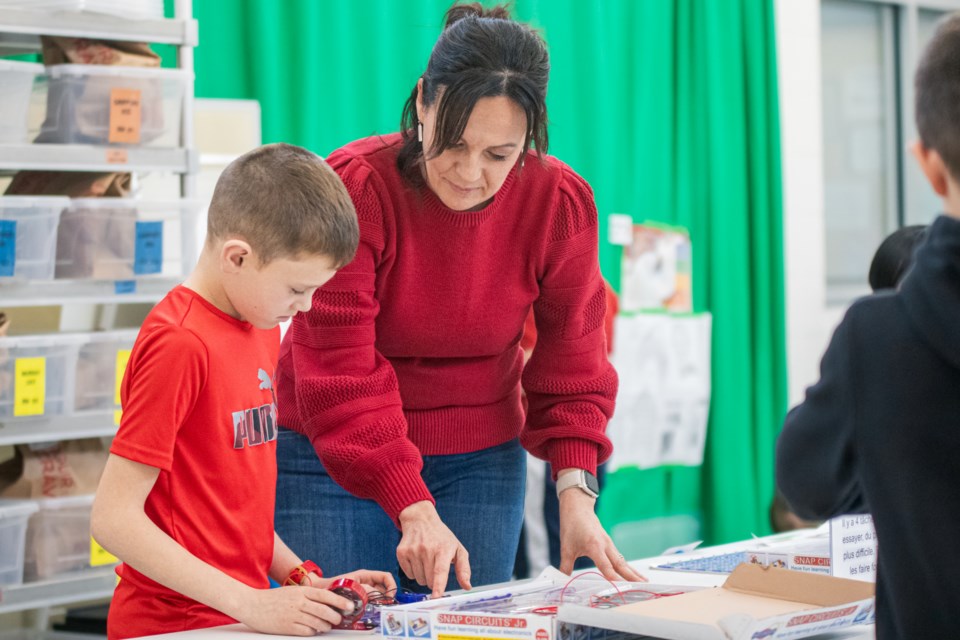ST. PAUL – Last week, students at the St. Paul Elementary School busied themselves with various interactive stations designed to ignite their curiosity and creativity.
On Nov. 8, the elementary school celebrated International STEAM (Science, Technology, Engineering, Arts, and Mathematics) Day, setting up stations to engage students in various aspects of STEAM.
“Students have hands on opportunities to work with our STEAM kits that we have in our school, to problem-solve, be innovative, creative, and to be critical thinkers all at the same time, through these task-based stations,” said Terra-Lee Gratton, a teacher at the school.
According to Gratton, STEAM-based activities allow students to build on “multiple competencies at the same time.” Among the many skills STEAM-based activities teach is communication. She said that instead of simply asking teachers how to solve problems they were tasked to solve, the students collaborate with one another to figure out a solution.
When asked if STEAM Day is the only day students have the opportunity for STEAM-based activities, smiling, Gratton shook her head no.
“We have our Makerspace,” she said, which is a room with “low-tech and high-tech opportunities for our students,” used every day. Students go to the Makerspace to build, design, and even make their own 3D projects by using a variety of technologies.
Some of the stations at the Makerspace include opportunities to learn the beginning stages of computer coding by moving a small robot. These stations are not very complicated, explained Gratton, but they are designed to “ease” students into coding.
In the Makerspace, there are also STEAM-kits that students can use for creative projects. These kits and other materials are also recyclable.
The Makerspace, according to Gratton, was previously a computer lab. And within five years, it has been transformed into what it is today.
“I just feel it's so important for students to have these hands-on learning experiences because they are our leaders in the future,” said Gratton, adding young scientists, for example, are the future problem solvers of the world.
“So, allowing our students to have these opportunities just enriches their learning.”



